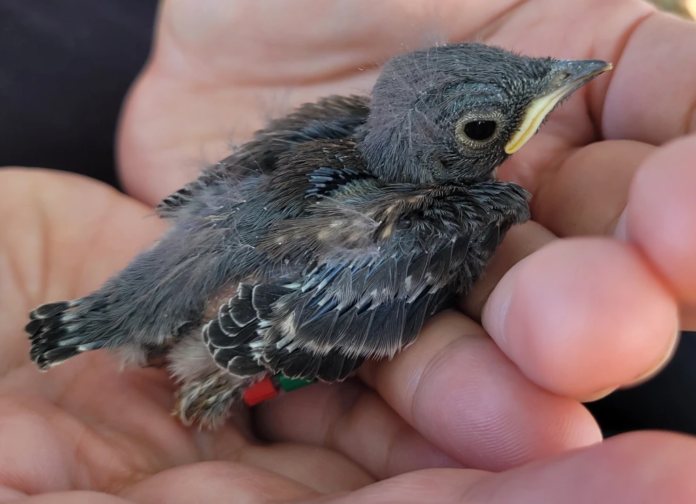Increases in temperature and precipitation during nesting season are a growing obstacle for these birds
By LILLY ACKERMAN — science@theaggie.org
A new study from researchers at UC Davis found that increasing temperatures and changing precipitation patterns negatively affect the reproductive success of several songbird species that live along Putah Creek.
According to lead author Jason Riggio, a postdoctoral scholar at the UC Davis Museum of Wildlife and Fish Biology, global climate models predict temperature increases in the Central Valley and Putah Creek areas of up to 3 degrees Celsius by the year 2100. Precipitation variability between years is also expected to increase, and along with a change in precipitation timing, greater amounts of rainfall during nesting season from February through May are expected.
The study examined the effects of these changing variables on the reproductive success of four native cavity-nesting songbirds along Putah Creek: tree swallows, western bluebirds, house wrens and ash-throated flycatchers.
It was found that increased maximum temperatures during breeding season led to lowered reproductive success; chicks were less healthy and fewer in number. Years with heavier precipitation during breeding season were also correlated with lowered chick health and survival.
“Really wet breeding periods […] tend to lower reproductive success,” Riggio said. “That’s because nestlings that are cold and wet have a higher probability of dying in the nest. [Also,] the parents can’t go out and forage when it’s raining, so their young are cold and wet and not being fed.”
These results highlight the importance of tracking precipitation and temperature to understand the survival risks for these birds, information that had been lacking previously. These results highlight a significant risk for songbirds as precipitation and temperature continue to change and provide crucial information about the risks of higher temperatures for these birds, which according to Riggio was previously lacking.
The study also examined habitat use around the creek, finding that western bluebirds and tree swallows were sometimes choosing to nest in nearby orchards instead of the natural riparian habitat. They had similar, if not greater, reproductive success in these orchards, showing adaptability and potentially a glimmer of hope amid climatic changes. However, according to Riggio, house wrens and ash-throated flycatchers did not choose to nest in orchards at all and appeared to be heavily tied to natural riparian habitats.
The data for this study came from the Putah Creek Nestbox Highway project, founded in 2000 by co-author Melanie Truan, a research ecologist with the Museum of Wildlife and Fish Biology.
The project began as a way to provide artificial habitats for cavity-nesting songbirds whose typical nesting places — holes in large trees — had been largely removed from the Putah Creek area, as most of its large trees were cut down. Hundreds of nest boxes were built and placed along the creek as a new nesting place for these species.
“In the beginning, I wasn’t sure if the birds would come but before long most of the boxes were occupied,” Truan said via email. “The boxes attracted seven different species, including the Western Bluebird which, once abundant, had been largely extirpated from the region. Bluebirds are now thriving[.]”
The project, aided by the Museum of Wildlife and Fish Biology, has monitored and recorded which species use the boxes and how successful the nests are each year. Over 20 years later, the authors were able to use about a decade’s worth of this data, and their study is a step toward understanding how to help ensure these birds remain along Putah Creek for many years to come.
Working to maintain the nestbox highway has allowed crucial research to be conducted and has supported the revival of local bird populations.
“The project has exceeded my wildest expectations,” Truan said. “Over 15,000 fledglings, of seven different species, have been produced, helping to bring back populations of these birds to the region.”
Written by: Lilly Ackerman — science@theaggie.org




